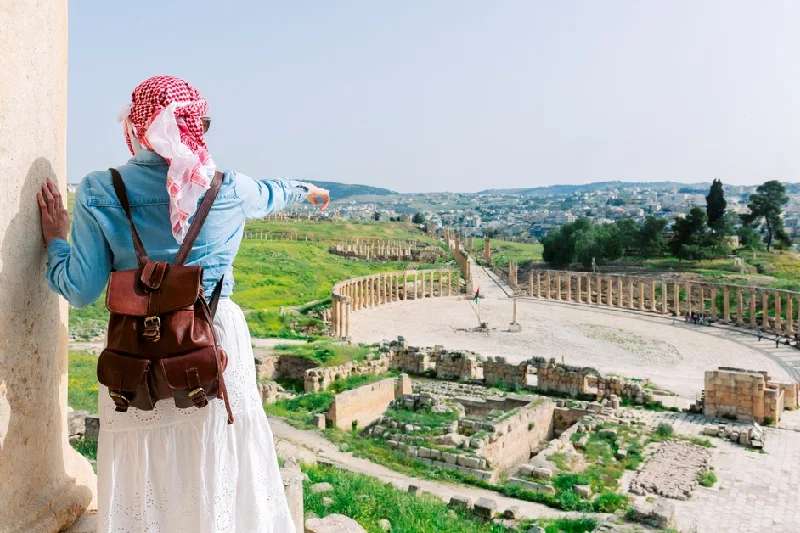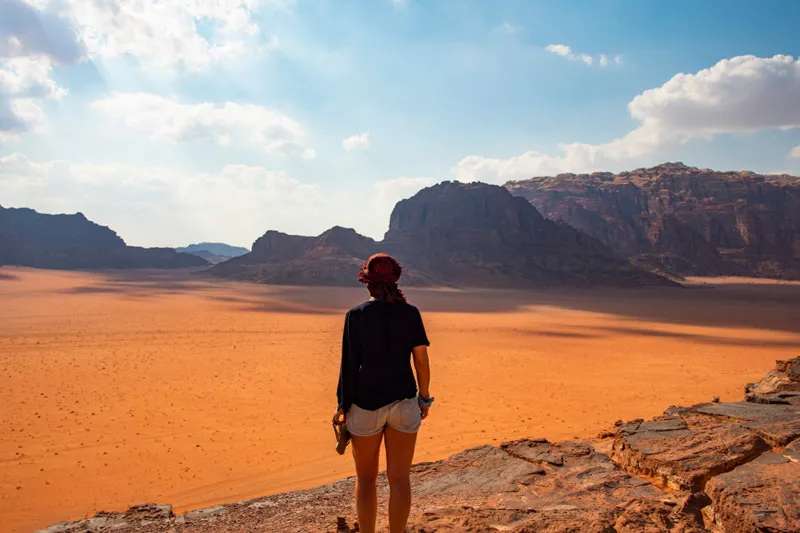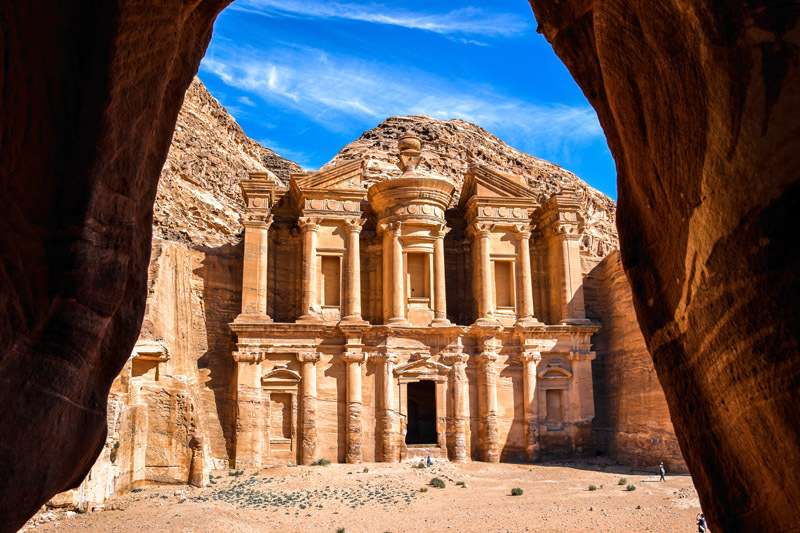
The Siq of Petra
The Siq, Al-Siq, or As-Siq, literally means 'the Shaft' when translated to English. It is a mystical corridor and the main entrance to the ancient Nabatean city of Petra located in the south of Jordan. A walk through The Siq will be is purely magical and the towering walls give you a tingling feeling. But there is no doubt about it As-Siq is one of the most important and best places to visit in Petra.
Layout
The Siq was actually naturally formed when a mountain broke into two due to tectonic activity in the area and was later smoothened by running water from Wadi Musa. It is a narrow gorge that is about 3 meters wide at certain points with a length of about 1.2 kilometres and ends at Petra's crowning jewel, the Al Khazneh (the Treasury). The walls of the
Siq measure between 91–182 metres (299–597 ft) in height. A wide valley leading to the Siq called Bab as-Sīq or Gateway to the Siq sits out outside. There are some underground chambers along the Siq, however their function is unclear.
Archaeologists suggest that they were ancient homes since they could not be tombs. Archeologists agree that guards that protected Petra's main entrance were most likely housed there.
More Sights To See
The Siq is a spectacular natural wonder that offers not just a view but an experience. The majestic walls that surround it will overwhelm you as you get soaked in the beautifully colored rocks. However, there are some other amazing places you can also visit if you are ever near the Siq. Here are some of them.
1. Al-Deir
For an adventure like no other, hike to Al-Deir Monastery in Petra. It is one of the most incredible sites to see in Petra and unlike most other ancient sites, it is well preserved. But apart from the sights, you also get to taste some delicious local treats on your trip.
2. Colonnaded Street
Colonnaded Street is definitely one of the must see places in Petra. This street is a mixture of Jordanian and Roman culture. The beautiful Colonnaded Street is designed to have shops on both sides so be sure to check out some of them for some local delights. It was reportedly built around 106 AD.
3. Al Khazneh
The Al Khazneh "The Treasury" is one of the most well-known Petra sights. It is thought to be the city's most elaborate treasure and for good reason. The place leaves you with a transcendent feeling, because it is more of an experience than a location. Al Khazneh, is one of Petra's most stunning and serene tourist destinations.
4. Royal Tombs
Tombs can't be exciting, right? Wrong. The royal tombs of Petra has some exquisite burial places you can ever find. The tombs are completely hewn from beautiful red rocks. The tombs have seen some wear and tear due to time and erosion and has lost some of its charm, especially the paintings, but the architecture and carvings are still breathtaking. The tombs were originally built as a cemetery for Nabatean King Malichus II in the 1st century AD, but it served as a church about 400 years later and then served as tomb again. Now it's exclusively a magnificent tourist attraction.
5. Qasr-Al Bint
This 76-foot temple of Qasr Al-Bint is undoubtedly one of the most fascinating spots to visit in Petra. The designs of the temple were not very well preserved and so the walls which were formerly brightly painted and decorated with carvings of several god busts no longer look the way. However, It is a magnificent edifice even thought it has lost its former glory.
One of the main Petra attractions and the only freestanding structure in the city is the Qasr al- Bint.
6. High Place Of Sacrifice
The High Place of Sacrifice is the one place in Petra that you should definitely not miss because it offers you an unbelievable view of Jordan. There are many high places in Jordan but this one is the most accessible one. You can hike to the High Place of Sacrifice if you're up for an exercise and if not, you can also take a cheap donkey ride which that costs about JD 10. The high place of sacrifice was built right above Jebel Madbah back and was used for channeling
blood flow in the ancient times when animal sacrifices were an everyday thing.
7. Petra Museum
The Petra Theater is a rock structure that was constructed in the first century AD by the Nabateans. It could initially accommodate only 3,000 people but the capacity was upgraded to 7,000 by the Romans. An earthquake that occurred in 363 BC destroyed many parts of the theater, and it was later further disassembled to make way for other buildings. But it continues to rank among the most significant Petra tourist attractions.
History
The Siq was used as the grand caravan entrance into Petra and was highly sacred to the ancient Nabatean people. In 1998, some archeologists discovered a group of statues when digging and although the larger part of it's upper section has been eroded, it is still possible to recognize the almost lifelike figures of two merchants leading two camels.
Best Visiting Time
It's one thing to visit the Siq, it's a different thing to visit it at the right time, so if you want to see the Siq in the best possible conditions, we recommended visiting in Spring between March and May or Autumn, between September and November. These times are the best times to get away from the heat of summer.
What Makes It Famous
Portions of the Siq, were decorated with beautiful and elaborate Nabataean sculptures of the gods they worshipped.
The sculptures, statues and idols were placed close to the water, because the ancient Nabataeans believed water was sacred. Those sculptures are intriguing and their design is very captivating, and they are the reason why the siq is one of the most visited tourist attractions in Jordan.
Location
The Siq starts at the Dam in Wadi Musa- The Valley Of Moses and ends at the opposite side of the Al-Khazneh- The treasury in Petra, Jordan.
related tours

Jordan Short Break
3 Days / 2 Nights
From
$ 346

Magic Trip of Jordan
6 Days / 5 Nights
From
$ 688

Taste of Petra Jordan
4 Days / 3 Nights
From
$ 515
